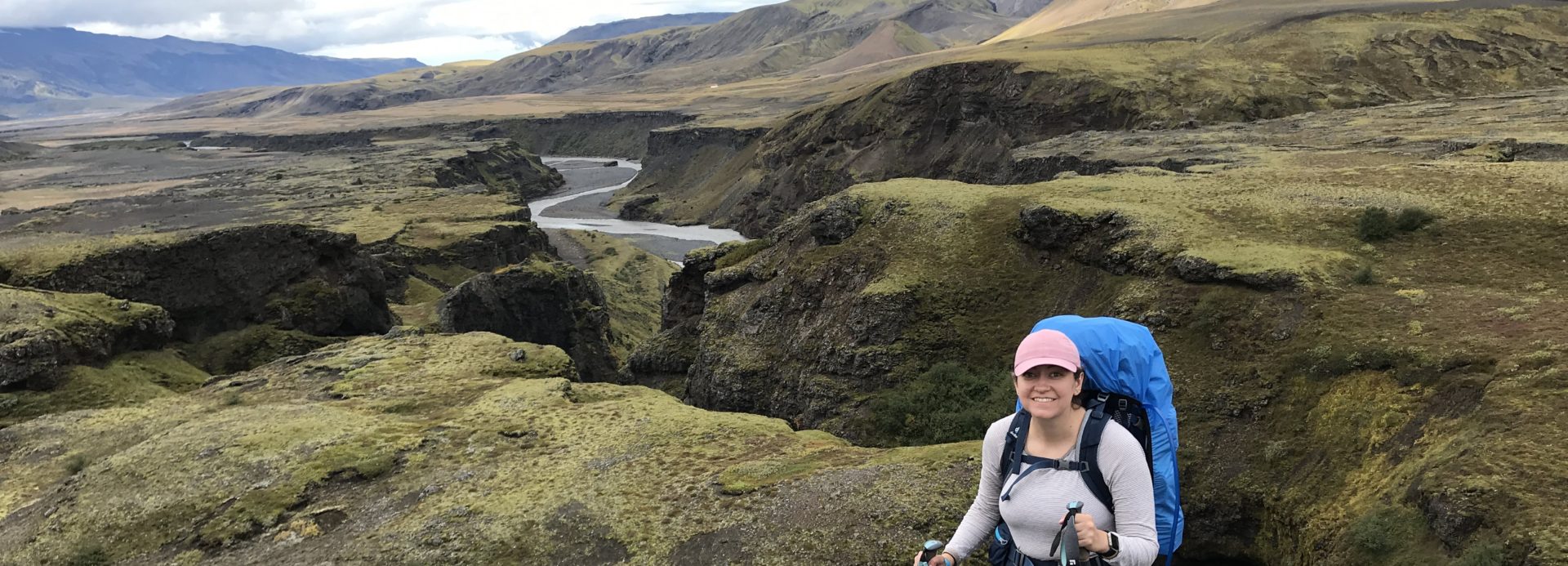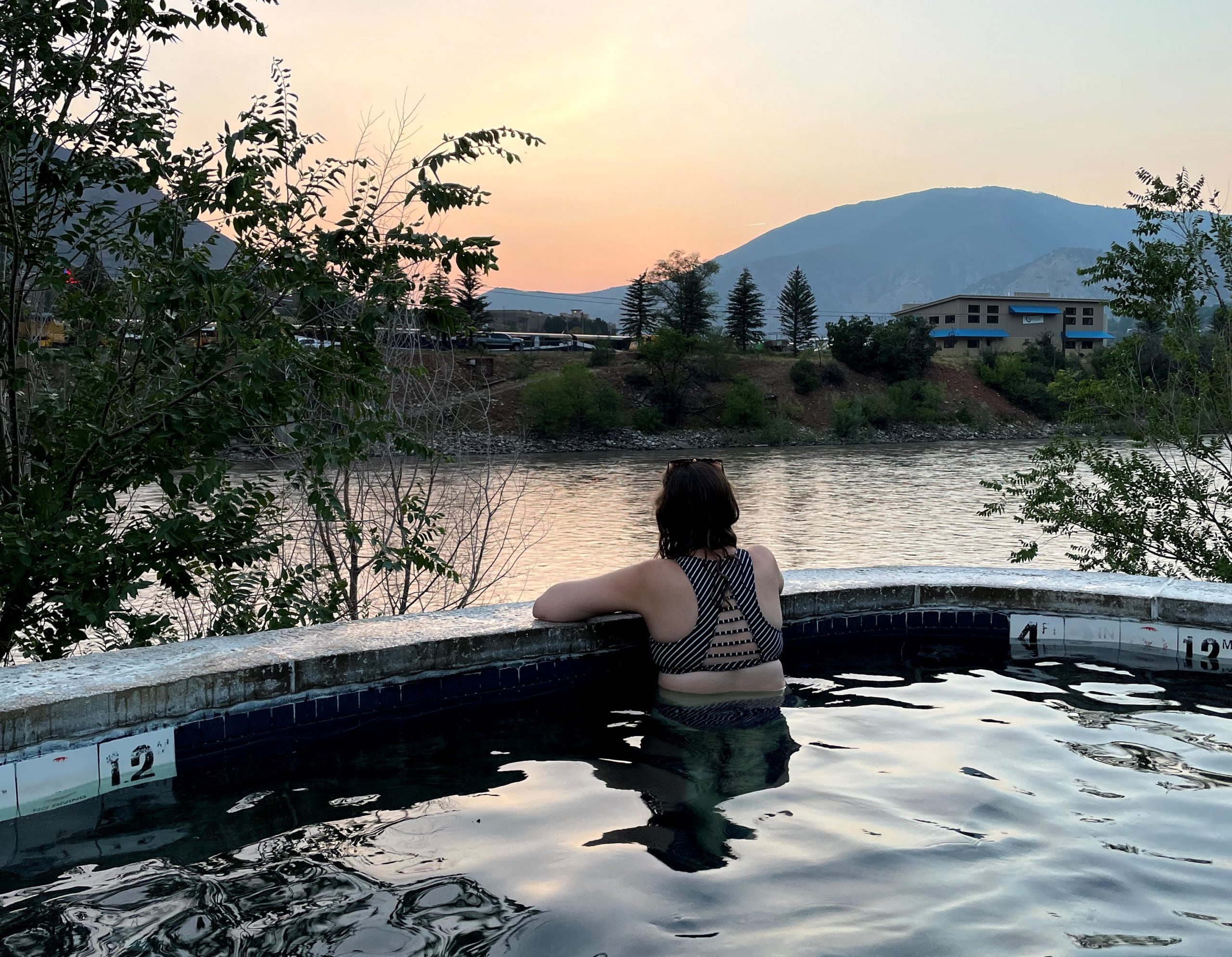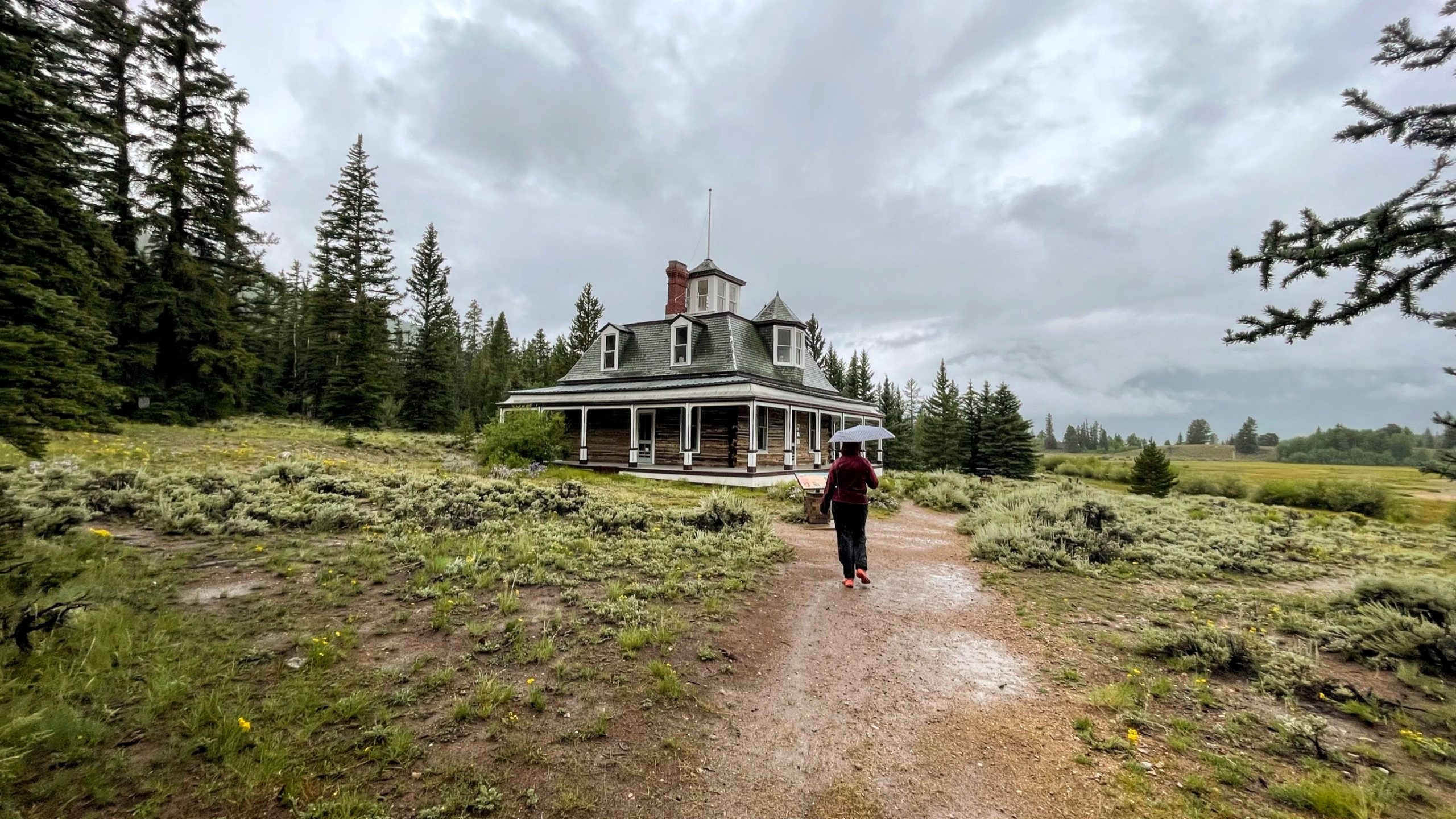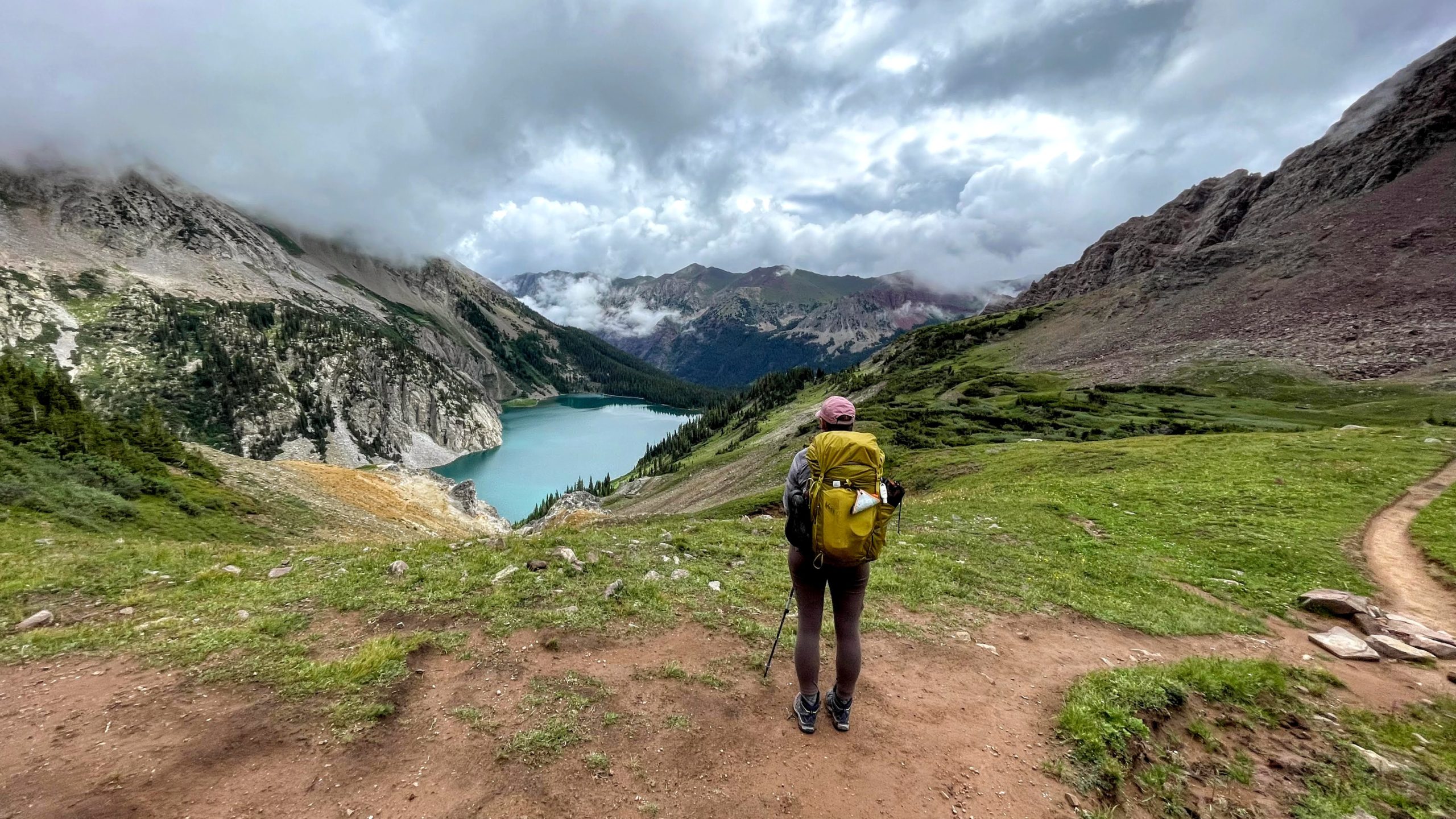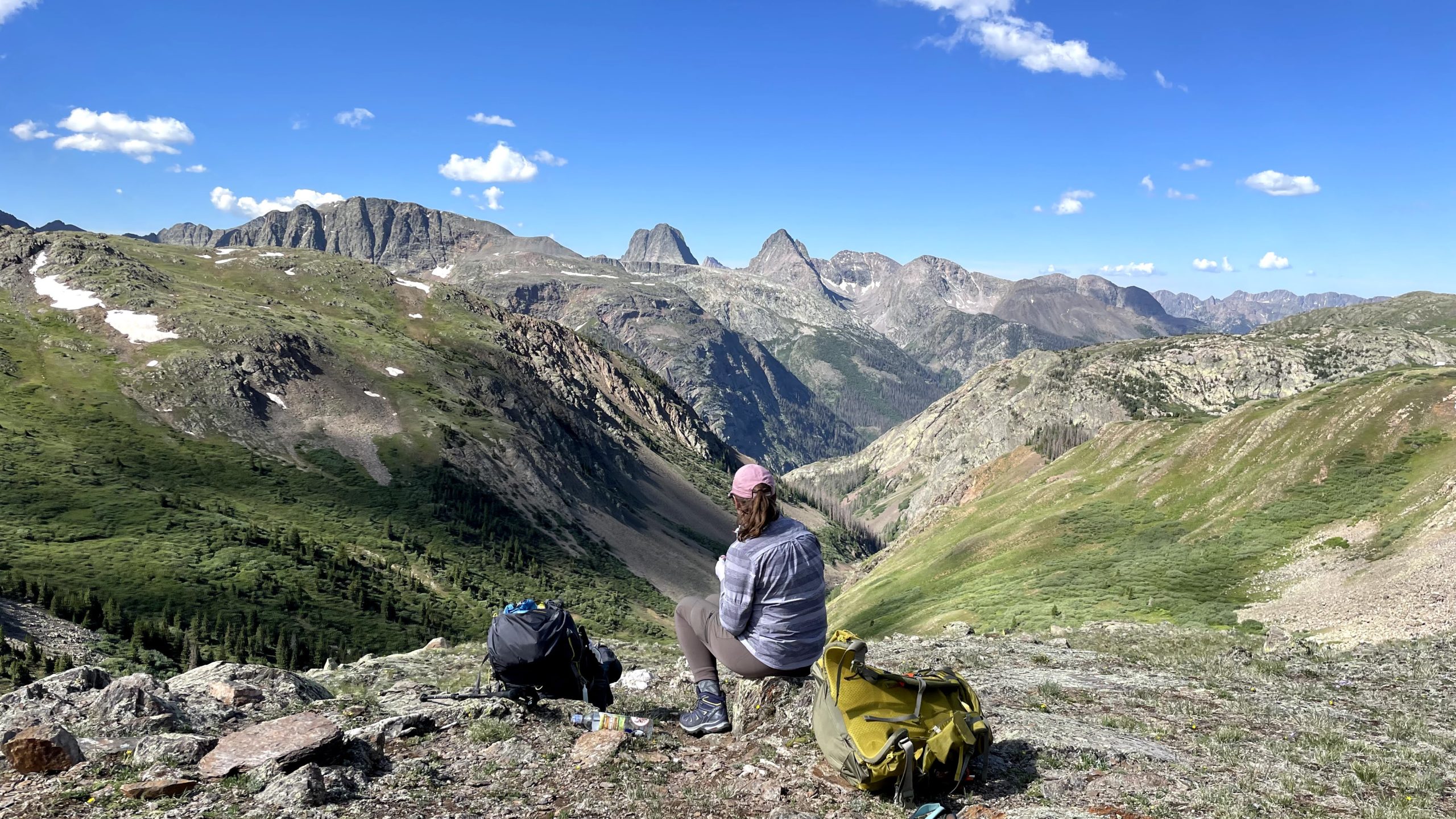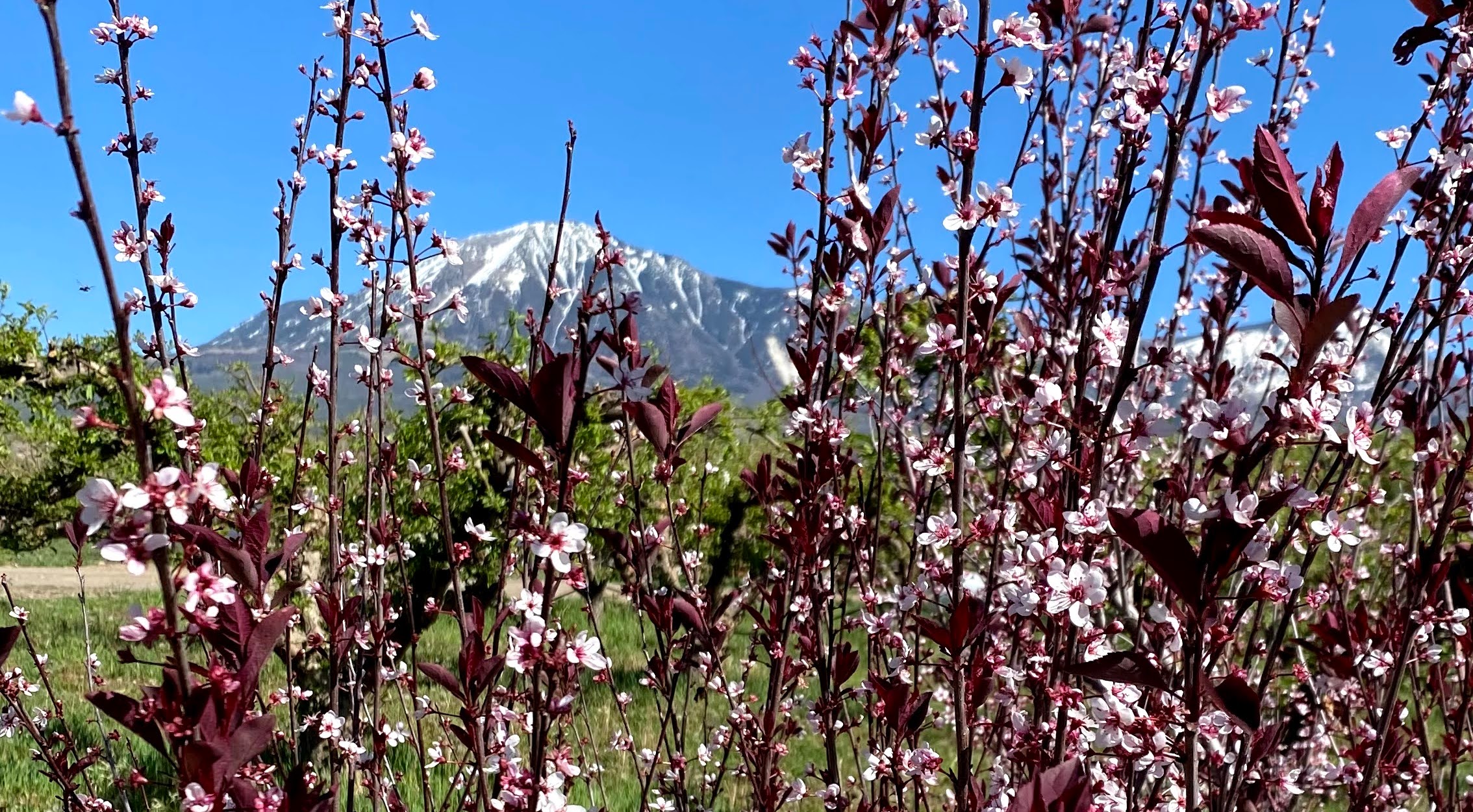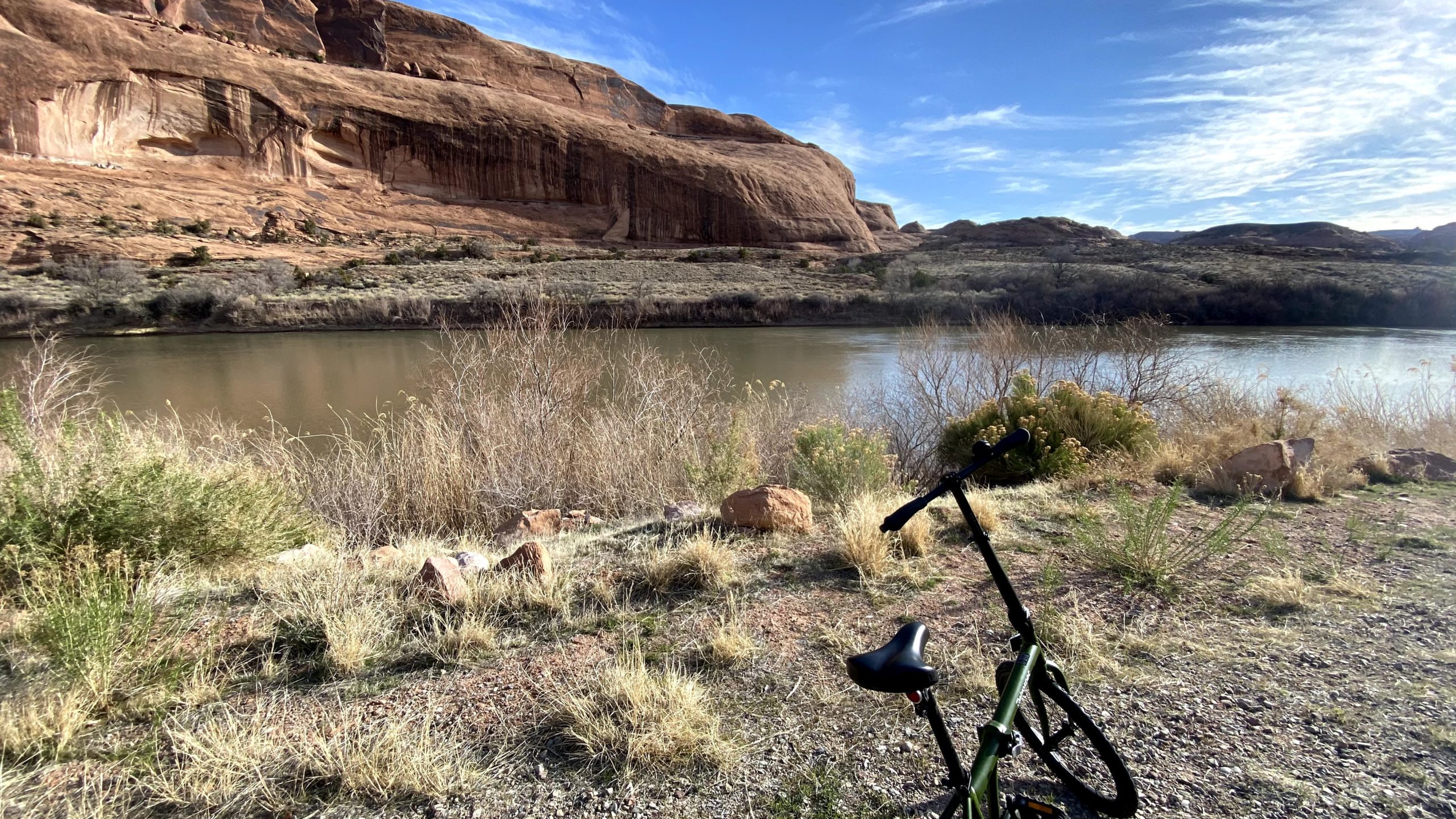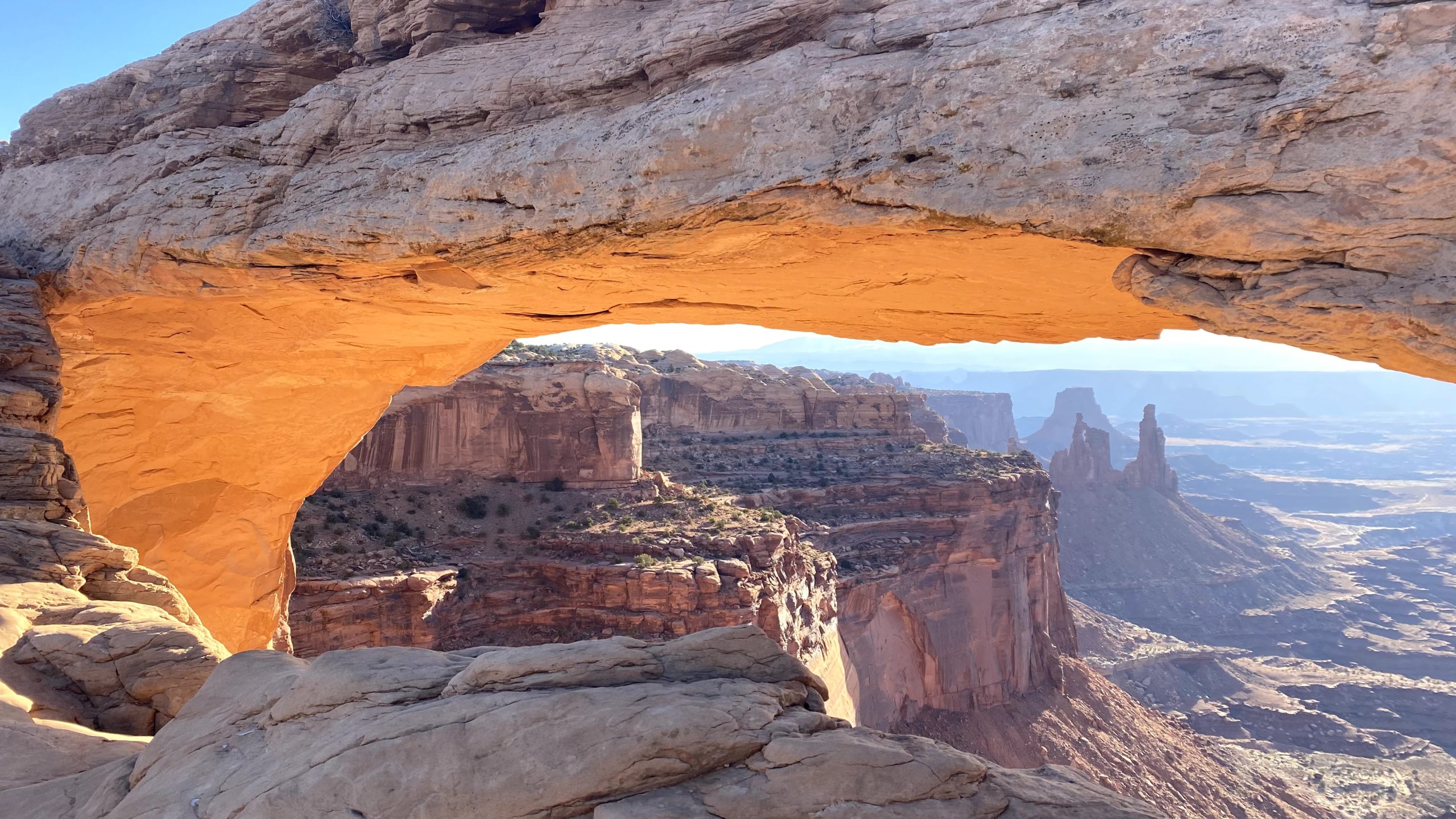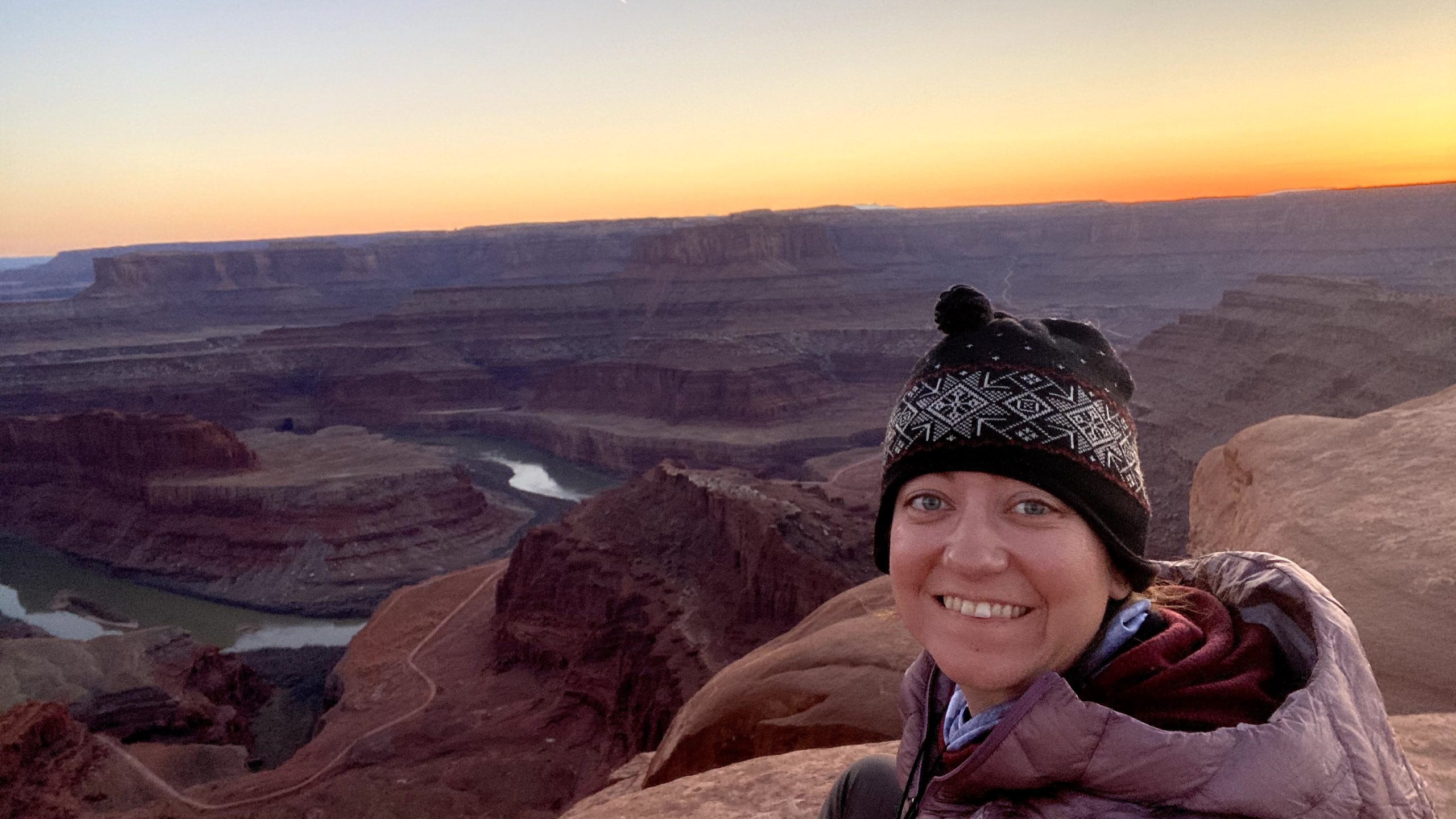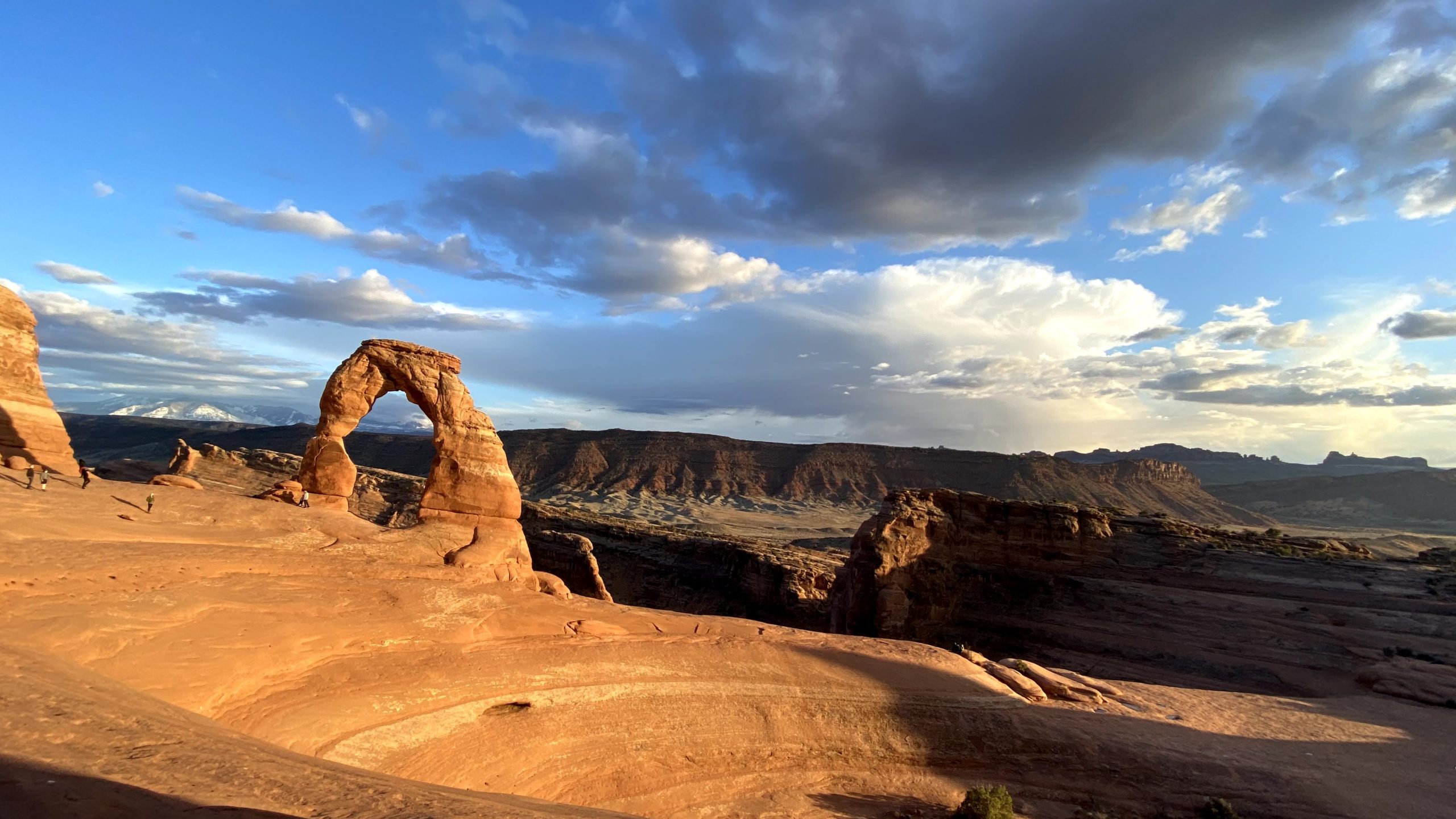After Nick and I’s Four Pass Loop backpacking trip this summer, we rounded out our vacation with a trip to Glenwood Springs to soak in Iron Mountain Hot Springs, and then headed to Hot Sulphur Springs near Granby before finishing our trip in Grand Lake (August 5-7, 2021).
Iron Mountain Hot Springs
After our epic backpacking trip, we stayed at the Residence Inn Glenwood Springs, which offers a small discount for Iron Mountain Hot Springs. It felt like a great luxury to have a suite to ourselves, and plenty of space to unpack, clean our gear, and shower. Indoor plumbing is just amazing after you’ve been without it for a while. I wanted to go to Iron Mountain after my amazing experience during my Rifle Ice Caves trip.
We headed right over to Iron Mountain Hot Springs, which is a few minutes from the hotel (reservations were required this time, but they had plenty). We brought our robes, which are less of a necessity in summer compared to winter. Iron Mountain has a variety of pools with different temperatures and sizes set next to the river with lovely mountain views. There is an area where you can get some pretty nice charcuterie and other snacks, and drinks to enjoy in the pool. In summer, you can also enjoy lounging in the tables and chairs (less appealing in winter, for sure). We enjoyed trying the various pools, getting some drinks, and watching the sun set over the river. We made some new friends as we chatted with people in the pools.

Hot Sulphur Springs
Due to mudslides from 2020 fires, I-70 was closed, so we went all the way around through Steamboat Springs (a five hour drive) to get to Hot Sulphur Springs. We stopped for a nice lunch and coffee at one of our favorite bookstores, Off the Beaten Path.

We had never been to Hot Sulphur Springs or nearby Granby before. We checked into one of their simple, small, but nice rooms. We got two soaking times includes: one was in the evening and one was the next morning. Because it was summer, they recommended the latest soaking time due to the heat of the day, from 8-10 pm. The only restaurant in Hot Sulphur Springs, the tiny town, was closed, so we headed to Granby, about 10 minutes away, and got some excellent takeout Chinese at the Pearl Dragon. While we waited, we enjoyed beer from Never Summer Brewing. Granby has some nice places!
Hot Sulphur Springs is a bit more rustic and dated then Iron Mountain, but we enjoyed it a lot. There are some pools that only fit a couple people and some larger pools, all of varying temperatures. The water has a lot of minerals and a “Blue Lagoon” Iceland type color, as well as these white floaties that are don’t worry, also minerals.


We woke up for our soak the next day to the smell of smoke and hazy skies. Fire smoke was rolling in not from Colorado, but California and Oregon. We enjoyed a morning soak before the smoke worsened.I highly recommend Simple Coffee in Granby, which has delicious drinks served in glass jars you can return or reuse.

Grand Lake
Sadly, we really did not get to enjoy Grand Lake much due to the smoke, which was the worst we’d ever seen. We went into lunch at One Love Rum Kitchen, which was really good. We wore our masks more due to smoke than COVID at this point. We got some groceries and settled into Shadowcliff Mountain Lodge Hostel, which is a really cool place. It’s too bad we didn’t get to explore more of Grand Lake and get out of the lake, which you could barely see.
We ended up hanging in the beautiful lodge common areas all day, playing board games and eating snacks, and trying to glimpse the lake through the haze.


We had reserved hostel beds, but each had a room to ourself, which was nice. We headed out early the next day, eager to return home after our long adventure.
I really enjoyed both hot springs, which were a great way to recover from our backpacking journey. All of the towns were really nice, and I would love to return to Grand Lake and Shadowcliff when it is not as smoky.
